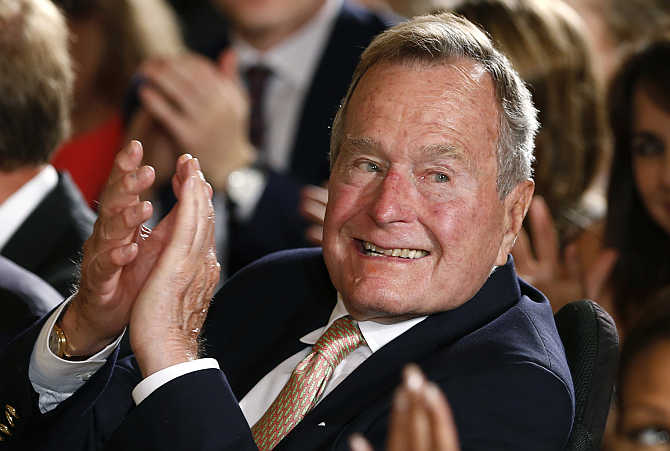 | « Back to article | Print this article |
Why bosses should not shut out voices that disagree
Shutting out voices that disagree can often be risky, says Shyamal Majumdar.
Sure Sir, will get it done right away”, or, “Thank you, Sir. The job will be done”. As the chief executive officer or the departmental head, you must be used to getting such emails from your junior colleagues and feel glad to be surrounded with such wonderful “makes-it-happen” or eager-to-please kind of people.
Hang on. You can look at this slightly differently as well. Are you surrounding yourself with people whose backbone is as firm as that of a jelly fish and in whose vocabulary, the word “no” just doesn’t exist? Are you basking in the glory of being a great leader whose followers avoid conflict at all costs and simply clam up in meetings, allowing you to micro-manage them to death? In short, does your leadership style have space only for a bunch of yes-men or women?
That’s perhaps a great short-term strategy for ego development, but a potentially dangerous one. When asked what has changed since he left office, George Bush said: “Well, I no longer win every golf game I play.” The former US President’s comments have valuable lessons for corporate leaders: they shouldn’t try to win every golf game either. And that can happen only if they step out of their hall of mirrors where everyone tells them what they want to hear. That’s because those who refused to be the boss’ mirror image and wanted to express their emotions and opinions openly have been shown the door.
Click NEXT to read more...
Why bosses should not shut out voices that disagree
Corporate history is replete with examples of leaders - even the best and brightest of them - often making mistakes because they don’t want to listen to what they falsely believe is not worth hearing. In such a scenario, managers feel uncomfortable expressing dissent and groups converge quickly on a particular solution. As a result, critical assumptions remain untested, and creative alternatives do not receive adequate attention.
But shutting out voices that might say otherwise can be risky. And there are examples galore from the pages of history. During a 1996 commercial expedition to the summit of Mt Everest, several climbers, including Rob Hall and Scott Fischer, two of the world’s most accomplished mountaineers, died in part because junior team members did not speak up when their expert leaders ignored their own core operating principles surrounding safety.
Human resource consultants cite the example of former General Motors’ president Alfred P Sloan Jr. At an apex committee meeting in the 1920s, everyone around the table expressed their complete agreement on a decision taken by him. At this point, Sloan said he was postponing further discussion on the matter until the next meeting to give everybody time to develop disagreement and gain some understanding of what the decision was all about.
Click NEXT to read more...
Why bosses should not shut out voices that disagree
The willingness to listen and ask questions is something CEOs must consciously develop. Harvard Business School has been trying to teach this for ages through its “case method”. Prior to class, students read a case study about a particular company. And then, at the start of every class, the professor poses a question: “What would you do?” As students start to answer the question and disagree with one another, the professor simply keeps asking questions to help steward the discussion.
In Why Great Leaders Don’t Take Yes for an Answer, author Michael Roberto shows how leaders can stimulate dissent and debate within their organisation, and also keep such interaction constructive. Too often, he suggests, leaders don’t hear bad news until it’s too late, eventually becoming so isolated that even high-risk actions go unquestioned.
Too many leaders isolate themselves in corner offices with people who kowtow to their every word or whim or while giving their feedback skew their answers out of fear of retaliation. They can’t tolerate dissent, are poor listeners, oversensitive to criticism and extremely abrasive with subordinates who are tough enough to fight back.
Click NEXT to read more...
Why bosses should not shut out voices that disagree
But the fact is every leader needs people who can prepare him for unforeseen setbacks by identifying holes in his thinking. Remember Don Quixote who was out of touch with reality but was constantly saved from disaster by his squire Sancho Panza. Or, how the fool plays a central part in bringing out King Lear’s transformation from a man full of pride and ignorance and a fool himself to a man who becomes wise through his humility.
HR consultants say the fool is a foil for the leader who needs someone who is willing to speak out and tell him how things really are. And if a leader wants honest feedback, he should ask himself if he has created an organisation in which there’s a place for such fools. CEOs who feel threatened by challenges to their ideas, must have people who can act as anchors, keeping the leader grounded.
Virgin Founder Richard Branson has acknowledged this. In an article posted in LinkedIn, Branson says, “Virgin has always had the occasional maverick embedded in every company. A business needs the occasional difficult, oblique, awkward creative person in the mix. Without a little sand in the oyster, precious things never get made.”




